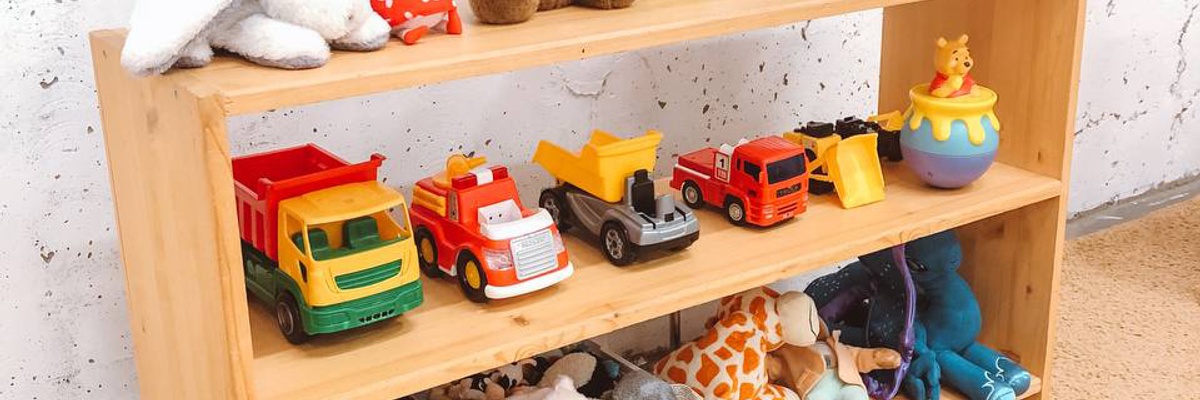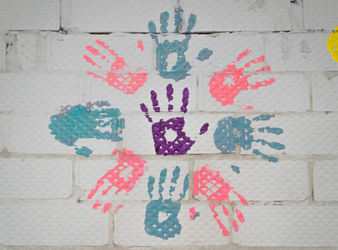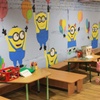Identify the shelter you'll transform
You'll need to identify the shelter that you wish to transform.Perhaps this is one you're already involved with using, or if not, perhaps you'd like to reach out to a kindergarten in your area and see if you can support them in transforming their existing space!
Remember:
- To research the necssary security levels and requirements that all shelters need to adhere to
- To ensure all legal aspects of the shelter are in place (these guidelines differ across regions)
- A shelter always needs to be inspected by a representative of the State Emergency Service so that they can provide you with safety recommendations
Brainstorm your vision for the shelter
How will you make the shelter comfortable for children?
- Consider the existing space that you are transforming, and think through all the limitations and opportunities it provides
- Consider the budget you have available to transform the space and brainstorm within what is reasonable
- Consider what existing materials you could reuse, or what materials you could get donated from other community membres and organisations
- Draw out a plan for how you would like the transformed shelter to look, so you know exactly what you will need and how you will go about the transformation
These recommended steps and guides have been collated from a variety of open-source articles written by Ukrainian community members. We encourage you to check them out to draw inspiration for your own transformation of an underground shelter!
https://b50.com.ua/2022/1207/...
https://www.youtube.com/watch?v=TXqNgKIL-PE&t=1s
https://dity.in.ua/novini/zhitomirski-dityachi-sad...
https://grow-clever.com/2022/10/yak-oblashtuvati-z...
Plan for functional needs in the shelter
Before you start implementing creative and playful interventions in the space, make sure you have provided basic and functional needs for the space. For example, these are:
- Has the shelter been cleaned before you begin transforming it?
- If you plan on painting the walls, have the walls been sufficiently prepared?
- Is there an area to store non-perishable food items and are there sufficient stocks of food?
- Is there an area to store drinking water, and sufficient stock for at least 2 days?
- Are there sufficient hygiene products for children?
- Have you planned for sufficient seating for children? This could be chairs, benches, mats or car seats!
- Is there sufficient lighting in the space? If not, what backup artificial lighting could you provide? (Flashlights, candles, etc.)
- Is there a fire extinguisher in the shelter?
- Is there a first aid kit in the shelter?
- Are there a range of shovel tools to house in the shelter?
Get creative with how you might beautify the space!
Now that you've considered the functional requirements for the shelter, it's time to beautify the space and transform it into a magical and playful environment fit for young children.
There are endless ways by which to add creativity and warmth to the shelter, but here are a few tried and tested ideas to inspire you:
- Paint the walls in a light colour
- Paint the walls with different patterns and illustrations to make them more exciting
- You can make a stamp from a dishwashing sponge to then imprint patterms on the wall
- Use a paint roller to paint a rainbow on the wall
- Bring in different toys: soft toys, cars, dolls, role-playing games, puzzles, etc.
- Set up a corner for creativity (coloring books, paper, pencils and stationery)
- If you have the means, hang a screen on the wall to watch educational video content
- Cover the floors with carpets or rugs for warmth and coziness
Spread the word to those who could benefit
There are likely many more shelters who could be inspired from what you've created. Share your transformation with your community and encourage others who are using shelters to transform the space into a cosy and psychologically safe space for children.









 "Follow the simple steps in the 5 step guide to consider how you might apply your own creativity in transforming an underground location into a cosy kindergarten"
-
"Follow the simple steps in the 5 step guide to consider how you might apply your own creativity in transforming an underground location into a cosy kindergarten"
-
